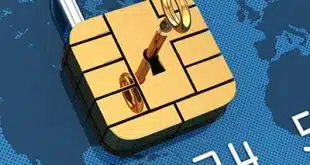A recent pilot demonstrated a number of benefits stemming from the conversion of real-world assets into their digital equivalents.
Lost in the coverage of the crypto meltdown last year were some important announcements by major bank associations, such as SWIFT and the Bank for International Settlements, about the use of central bank digital currencies in cross-border payments.
Central bank digital currencies are cryptocurrencies that are backed by a central bank. They have the characteristics of fiat money but are packaged so as to be tradable on cryptocurrency exchanges. A private-by sector version would be a “stablecoin” such as Tether or USD Coin, which is backed by reserves of government securities such as U.S. Treasury bills, or by highly liquid, low-risk commercial paper.
Since private stablecoins are backed by government debt anyway, it makes sense to simplify the structure by having a government issue its own stablecoin, backed by the central bank itself. This removes the risk of private stablecoins, which are vulnerable to interest rate shifts in money markets.
The advantage of a private stablecoin is that it works across national borders, which is not true of a CBDC. CBDC sponsors have had difficulty articulating a business case for domestic transactions, but the cross-border case is much clearer. Right now, cross-border payments have to go through global banks on their way to domestic banks. SWIFT, the global bank cooperative, is the accepted messaging framework for cross-border payments, so it makes sense that SWIFT would lead the way in experimenting with cross-border use of CBDCs.
Token Progress
At the Sibos conference in November, SWIFT’s Nick Kerrigan reported on a successful pilot of a system that facilitates trades between banks in different countries using three different payment networks: the SWIFT gpi network, which is the next generation of the classic correspondent-bank system; local CBDCs; and local or regional real-time gross-settlement (RTGS) systems.
The project team made payments using combinations of all three networks and a centrally operated SWIFT gateway. For CBDCs, the team simulated a “regulatory node” that could accept payment requests and implement them on the national CBDC ledger. The SWIFT gateway acted as a payment hub, using the ISO 20022 messaging standard as a common language between all three types of systems.
Establishing interoperability between CBDCs and existing payment systems was important because different countries are at different stages of development, and even once CBDCs roll out, they will be used alongside existing networks.
A related experiment extended the concept to tokens, which are like stablecoins but can represent any asset. You may have heard of NFTs, or non-fungible tokens, which represent real assets like artworks, music, real estate, and much more. In this case, the tokens represented bonds. The system was able to convert a bond into a token (tokenization) and back again (de-tokenization).
Starting From Scratch
If we think of stablecoins as tokens, then we can see that the two experiments are essentially doing the same thing, which is converting real-world assets into their digital equivalents. This has numerous advantages, including:
- Fractionalization: a token can represent a share of an asset, enabling many investors to jointly own something that might be impossible for each of them to afford on their own. This will improve liquidity and pricing by increasing the number of buyers and sellers in a given market.
- Cost savings: a blockchain removes the need for periodic reconciliation, since every transaction is uniquely and indelibly recorded, at the time it is made, on a centralized ledger available at all times to both parties. Smart contracts make it impossible for one party to fail to fulfill its obligations, and confirmations take place in near real time.
- Lower risk: another purpose of reconciliation is to make sure that all transactions execute properly. Otherwise, you have what is called “counterparty risk,” the risk that one party may fail to deliver the asset in return for the payment. Using escrow accounts and smart contracts, a blockchain-based system can eliminate this risk by linking the payment to the delivery. Essentially, the seller puts an asset into escrow with a custodian bank, which then transfers it to the buyer once payment is received. The blockchain provides perfect information to all parties at every stage of the process, aborting the sale if something goes wrong at any stage.
- Redundancy: in cryptographic payment systems, each participant has the option of maintaining a copy of the blockchain, which is synchronized on a regular basis. This means that if one participant fails, the others do not lose any information.
- Increased automation: smart contracts can automate existing or new processes, increasing efficiency and improving trust. Smart contracts are cryptographically signed, just like everything else on the blockchain, making it impossible to change them without the agreement of everyone involved. Combined with the rich data of ISO20022, it will be possible to use smart contracts to create new financial products and harvest improved data reporting for market and regulatory use.
One of the persistent challenges to cryptocurrencies has been that they provide few real-world benefits over existing payment methods, and quite a few downsides, such as volatility.
I have identified the most compelling advantages (in my view), but it is certainly possible to envision upgrading existing payment systems to gain the same benefits.
On the other hand, there is a benefit to starting over from scratch. This is the ability to discard decades of obsolete development. Maintaining legacy systems is so all-consuming as to leave banks with little time for true innovation. If we see CBDCs as an alternative to existing systems, and pursue the SWIFT strategy of interoperability, this should allow us to gain the benefits of starting over without losing the investment in systems that still work well.
—Aaron McPherson is principal at AFM Consulting Partners





